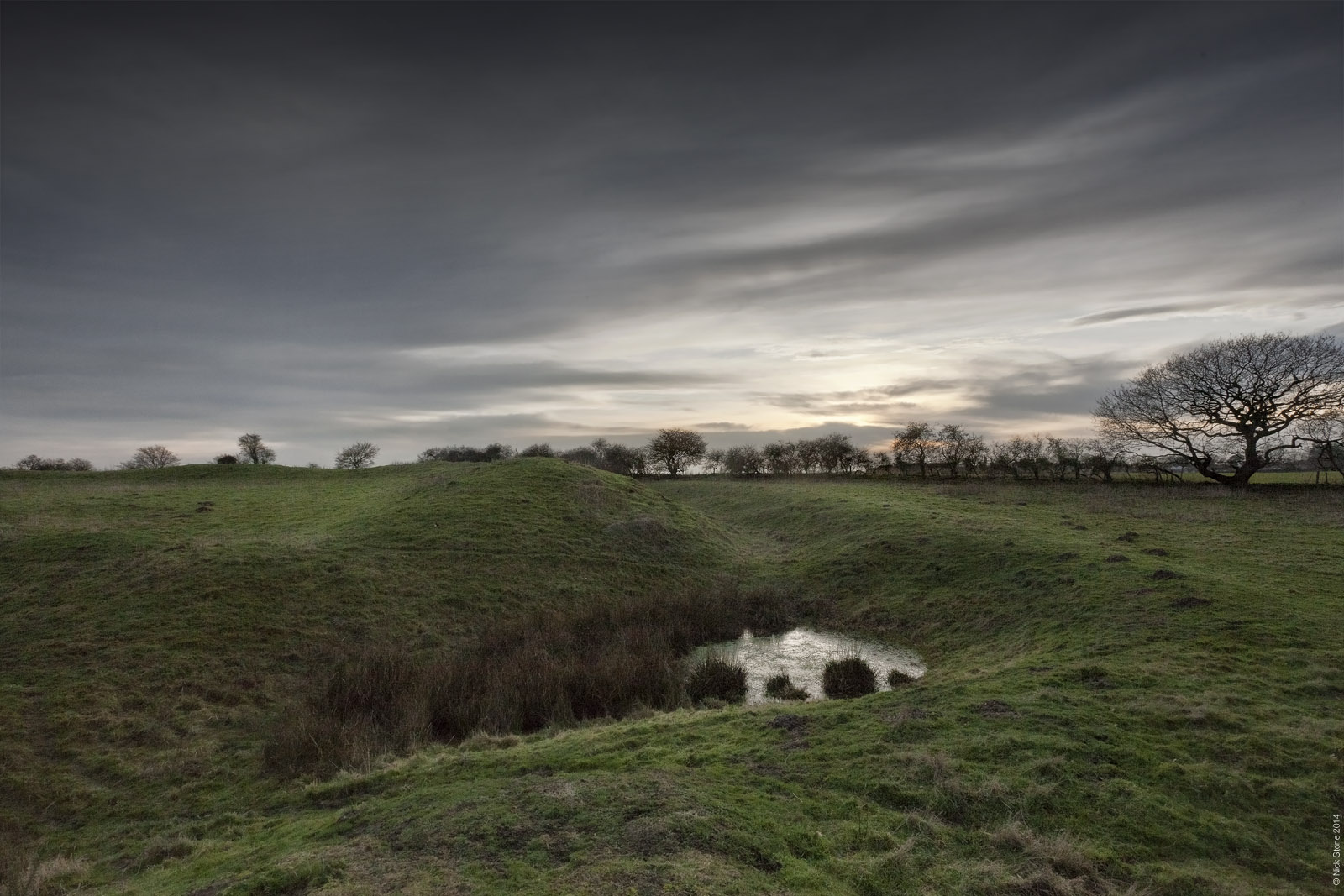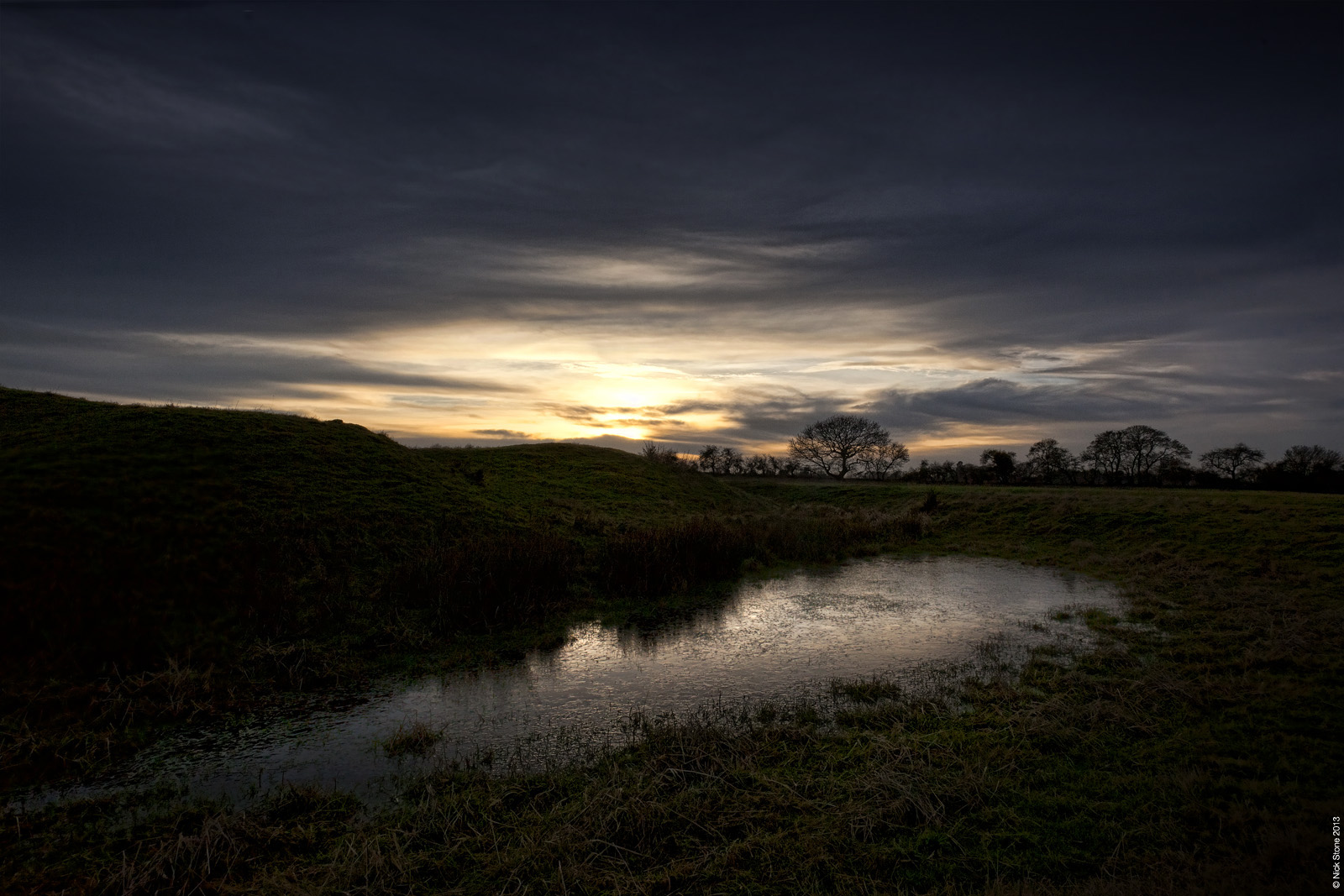Horsford Castle
When you look at the area surrounding Norwich quite how much there is in quite dense groups, we’re ringed with hidden areas that aren’t well signposted, or exist only in documentation and on old maps, or in some cases are even acknowledged; overshadowed by other seemingly more important things. There are barrows and an entire funerary near Venta Icenorum and Arminghall that are largely ignored – partly under a dual carriageway in an area full of rich pickings. Deserted Medieval Villages (DMVs) church ruins and the relics of old priories are everywhere.
Horsford isn’t exactly famed for it’s locale especially, despite it’s name probably bearing it’s history as somewhere that has held horse fairs for centuries. It is a satellite village tidily tucked between the Cromer and Holt Roads – quite easy to miss. As I’d been wandering around the the barrows in the forest nearby it would have been silly to not pop down a side road between the A140 and the B1149, park up awkwardly, and have a look at a Norman hunting lodge in the form of a motte and bailey castle in a field full of sheep , so close to the city, the sound of traffic on the wind, you can actually just about make it out from the A140 if you look towards the horizon scanning for bumps and rises, but here I am with it just me and a few curious sheep for company.
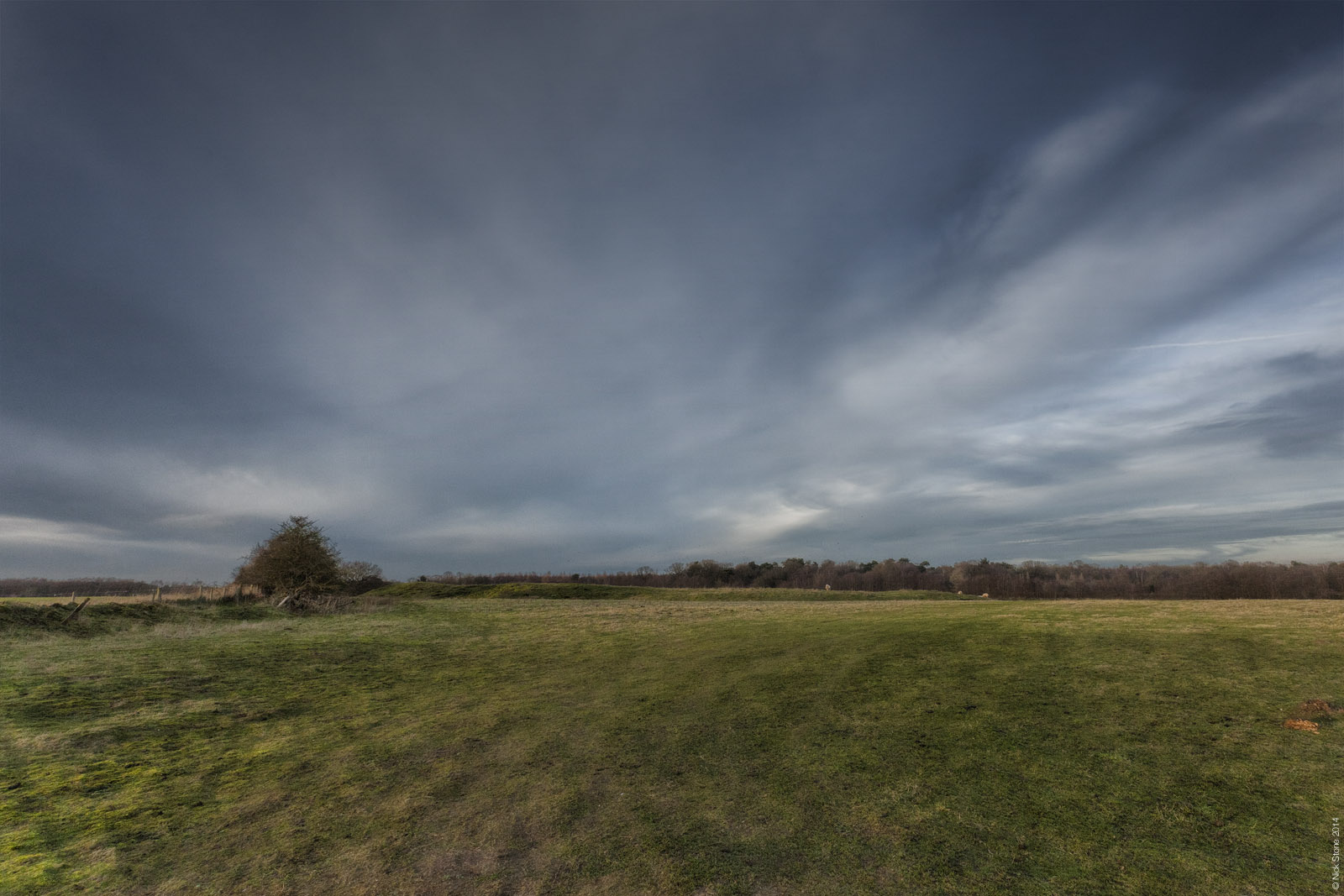
There’s nowhere to park, I chanced dumping the car on a field edge and advanced up a footpath sleeved with tree towards a distant slightly elevated blister glimpsed through the branches in the meadow. The tunnel opens out onto the apex of a triangular field with a ridge beyond and in front of you down the slope is a wall of grass about 10ft high with a 6ft deep ditch, still wet from the recent rain. The bailey provides an expanse of sheep and grass, it’s modest by Castle standards but impressive as an earthwork, and over to the rear is the Motte, it’s top uneven – higher than the surrounding area. There’s a distinct absence of any stonework which isn’t unusual in Norfolk, it could have been robbed out but I suspect it’s more likely this was built of timber as is often the way with these smaller sites, even nature’s little archaeologists, the moles, haven’t provided any clues.
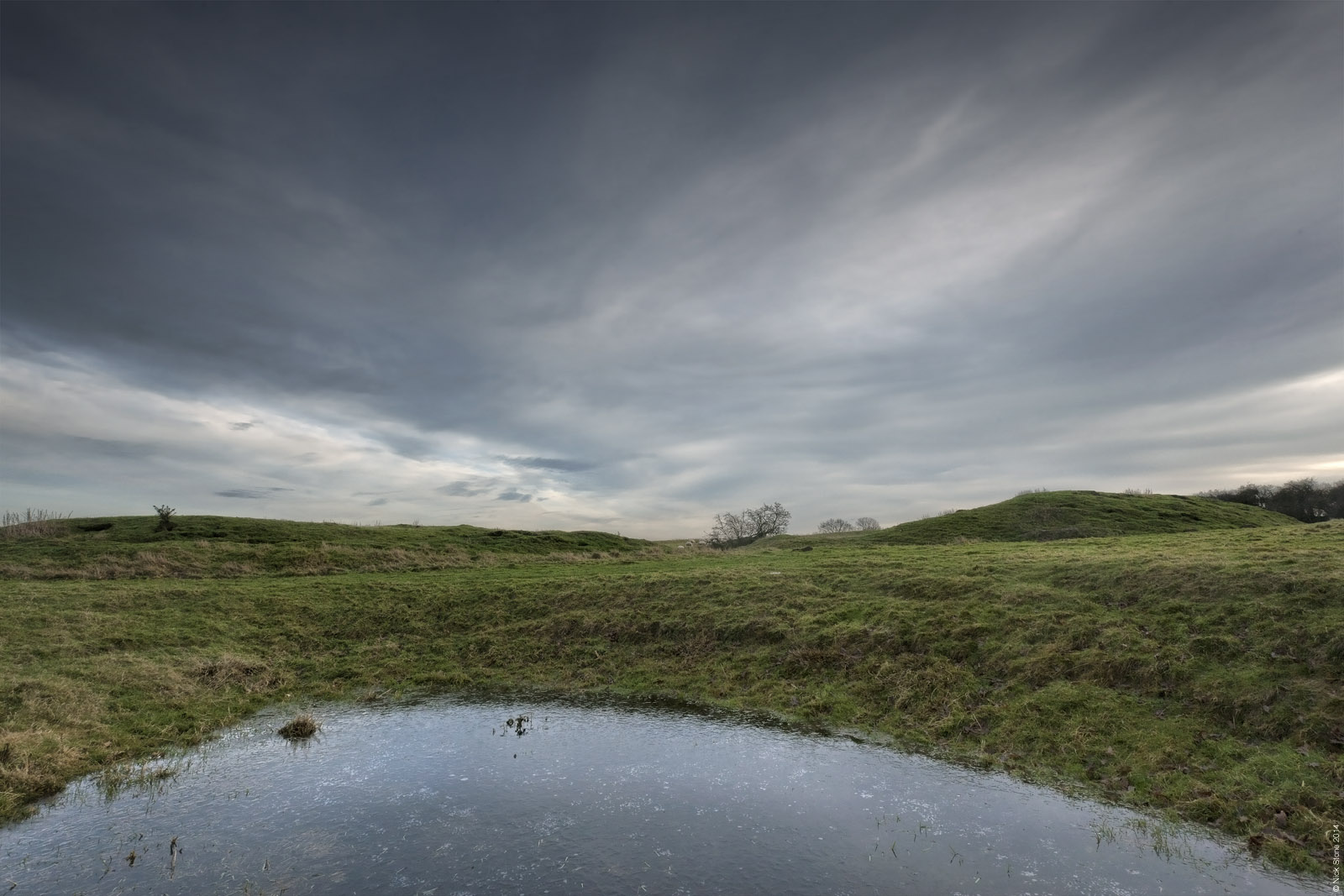
The name Horsford refers to either to a ford over the river Hors, currently known as The Beck. Think Saxon; ford is a crossing as in Oxford or Stratford, or even Frankfurt or Zandvoord, you can turn those Northern European language roots in your head for a while. It could of course be because it involved horses near a ford in the river, my preferred version purely because I like the continuity of the horse fair being at Horsford every year; is that some cultural memory? who knows. The outside contender is it’s named after Horsa the Saxon chieftan, but that seems a bit far fetched as is some of the divine twin myth that surround Horsa and his Bro Hengist plus they did most of their things in Kent..
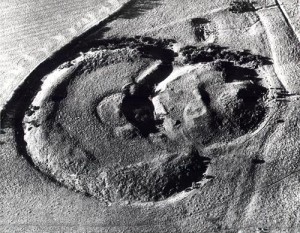 Before the Norman invasion the lands around Horsford were held by an Anglo-Saxon/Danish man called Edric, the land was hastily granted to Robert Malet a Norman, there’s a complicated story in this in itself so I won’t go into, but Malet who was High Sheriff of Norwich and Lord of Eye, which sounds suspiciously like something from Game of Thrones but isn’t. Anyway he sided with the wrong Duke of Normandy and the land was given to Walter de Caen; as in the place in Normandy where the Stone came from to build the Cathedral at about the same time. He built the castle and emparked the surrounding area in a show-offy way as you do when you’re a lord of this and that. Robert’s son, Robert Fitz Walter became Sheriff of Norfolk like Bryan Gunn did with Norwich only French rather than a goalkeeper. Robert F W got caught short after a trip to Rome, ended up in jail and prayed to St Faith, was released and built a monastery nearby, this eventually moved to Horsham St Faiths, hence that particular name. It does belie the fact that these little lost pieces of our local landscape were and are quite complex and deep.
Before the Norman invasion the lands around Horsford were held by an Anglo-Saxon/Danish man called Edric, the land was hastily granted to Robert Malet a Norman, there’s a complicated story in this in itself so I won’t go into, but Malet who was High Sheriff of Norwich and Lord of Eye, which sounds suspiciously like something from Game of Thrones but isn’t. Anyway he sided with the wrong Duke of Normandy and the land was given to Walter de Caen; as in the place in Normandy where the Stone came from to build the Cathedral at about the same time. He built the castle and emparked the surrounding area in a show-offy way as you do when you’re a lord of this and that. Robert’s son, Robert Fitz Walter became Sheriff of Norfolk like Bryan Gunn did with Norwich only French rather than a goalkeeper. Robert F W got caught short after a trip to Rome, ended up in jail and prayed to St Faith, was released and built a monastery nearby, this eventually moved to Horsham St Faiths, hence that particular name. It does belie the fact that these little lost pieces of our local landscape were and are quite complex and deep.
It fell into disuse in the 15th Century, whether it ever was anything other than a frippary or a hunting lodge is open to debate as finds on the site have been minimal. The real pity is in the late 1980s it suffered a bit under the plough and has lost some detail, it’s now open pasture and a scheduled monument, so hopefully it will remain protected in future unless the rabbits ruin it which is entirely possible looking at the collapses on the north eastern side of the bailey. There is talk of this area being redeveloped, let’s hope not.
